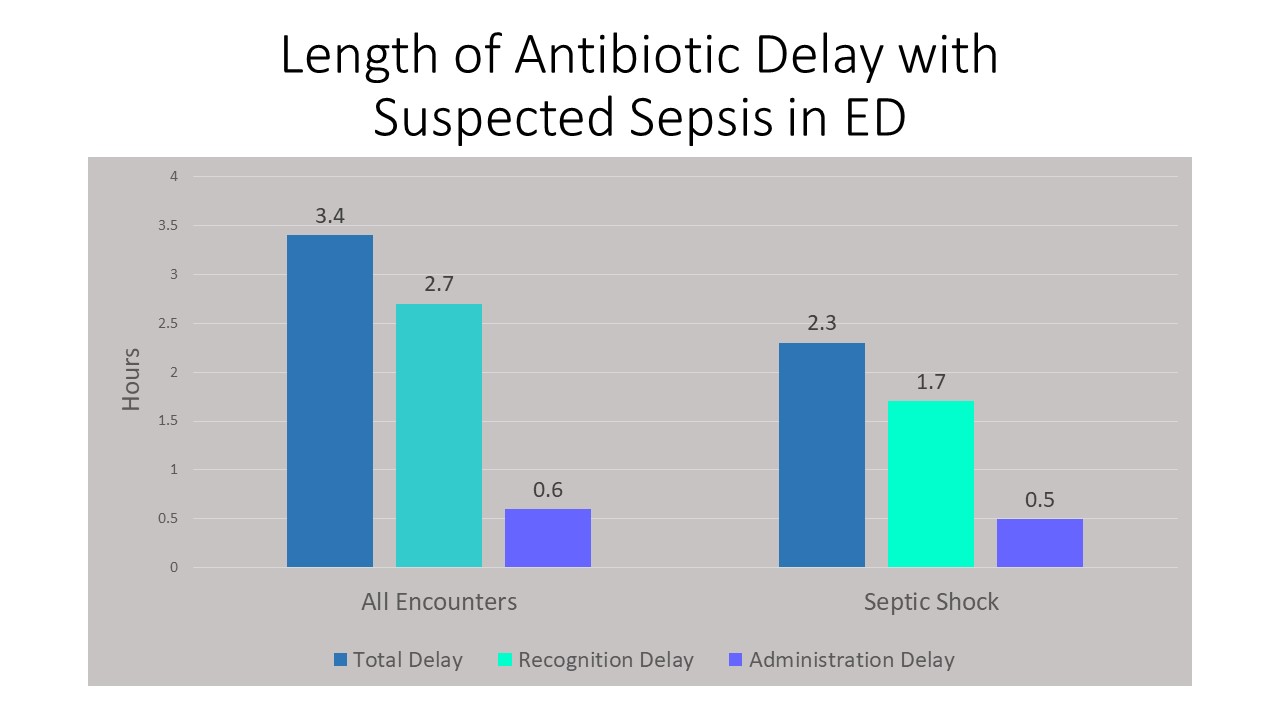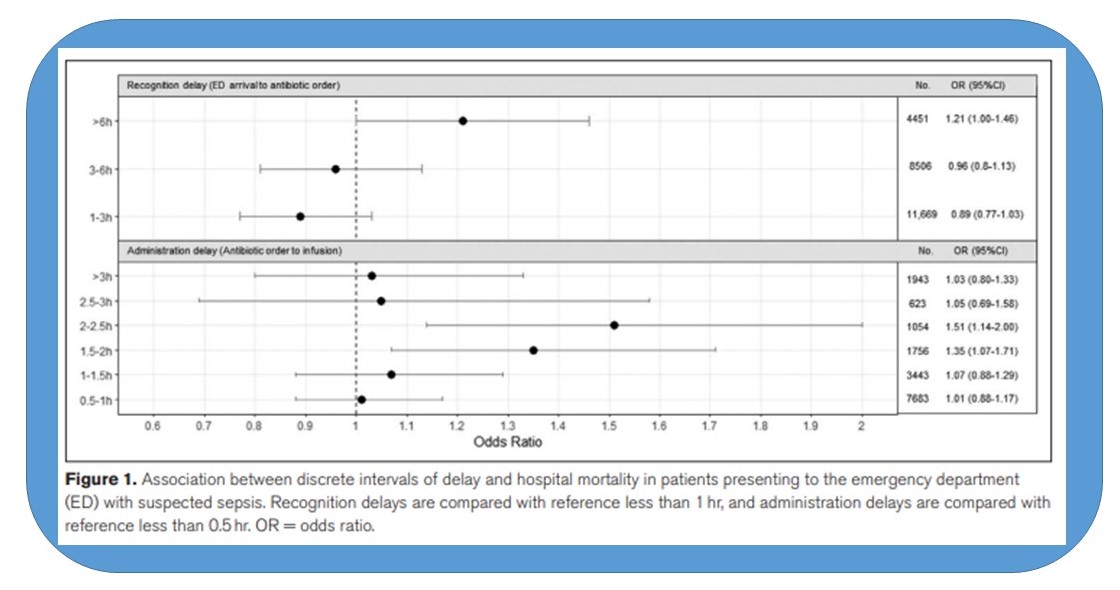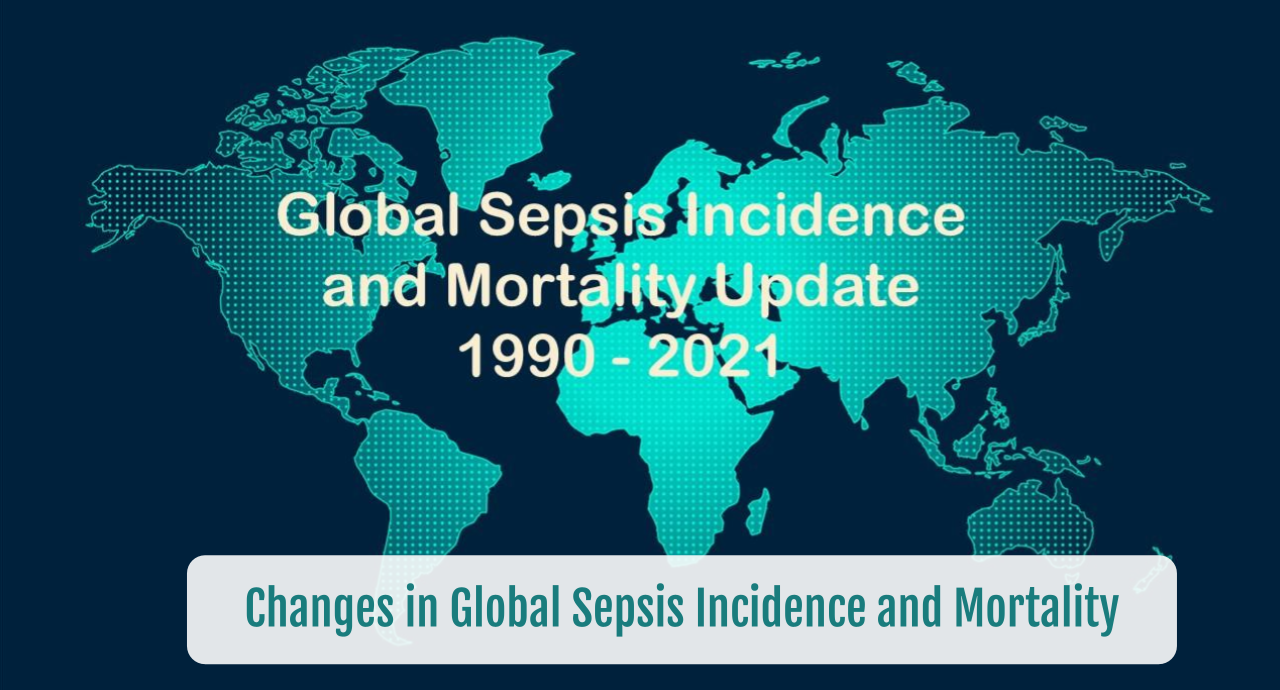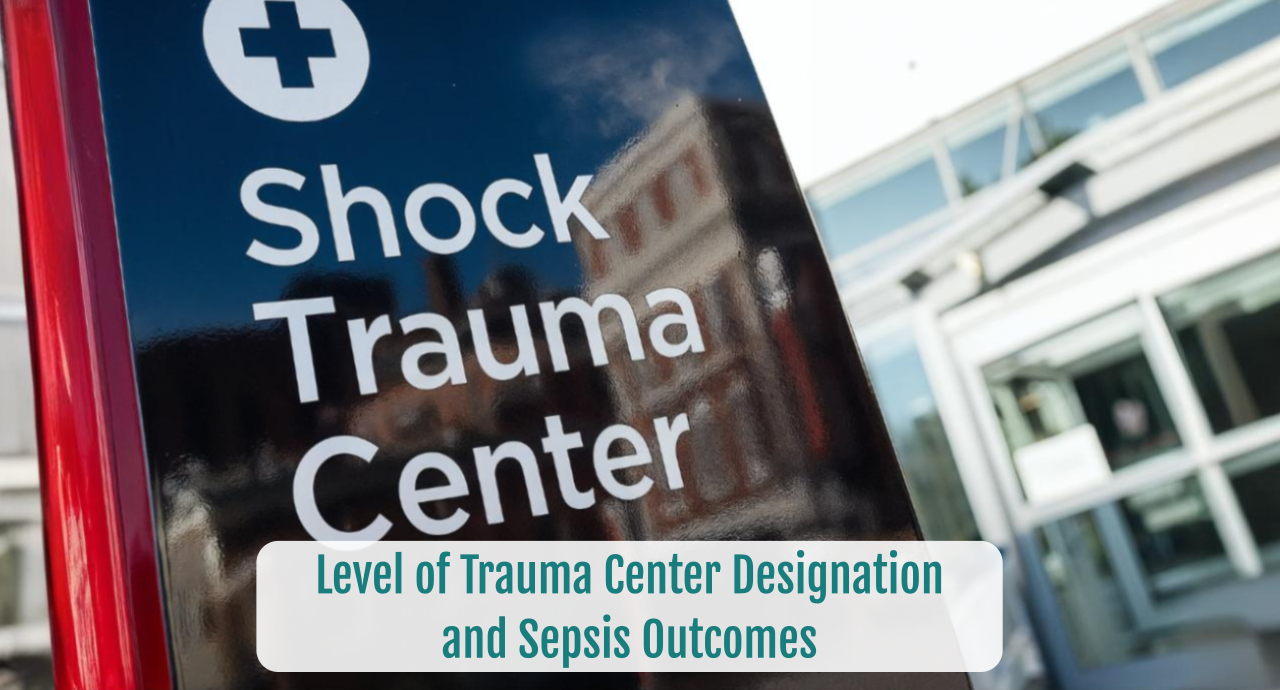Components of Timely Antibiotic Administration in Sepsis
SUMMARY
- There are at least 2 components to consider in timely antibiotic use in sepsis patients.
- The time from triage to ordering antibiotics caused four-fifths of the delay in meeting the 3-hour bundle goal.
- Both recognition and administration delays were associated with hospital mortality risk.
- The hour-1 bundle recommendation for antibiotic initiation may be too aggressive and lead to excessive use.
BACKGROUND
- Up to 40% of patients initially treated for sepsis are later found to have a low likelihood of infection.
- Aggressive time to antibiotic administration in sepsis patients has generated significant controversy between the rapid initiation to minimize adverse outcomes and the risks of promoting antibiotic resistance and toxicity.
- Current guidelines recommend antibiotic initiation within 1 hour (Surviving Sepsis Campaign) or within 3 hours (CMS SEP-1 quality measure) of sepsis recognition.
-
Previously, analysis of antibiotic timing relative to mortality have blended together 2 components of administration. These are:a. Time from recognition of sepsis to antibiotic ordering(Recognition Delayb. Time from antibiotic ordering to infusion (Administration delay)
- It remains unclear which time interval actually impacts mortality.
REVIEW
-
A recent retrospective analysis from Atrium Health (12 hospital system in the Southeast) evaluated antibiotic orders for mortality, in:
- 28,865 ED patient encounters
- 24,093 patients with suspected sepsis
- 3,681 patients with septic shock
-
Mortality was correlated with (P<0.01):
- Recognition time (hours from ED triage to antibiotic order)
-
Administration time (hours from antibiotic order to antibiotic infusion)
- There was a greater odds ratio of mortality in patients with order to infusion delay between 1.5 to 2.5 hours compared to 30 minutes.


CONCLUSIONS
- Allowing longer times for additional diagnostic considerations prior to initiation of antibiotics may be reasonable for patients with suspected sepsis.
- The bundle element of timely antibiotic administration has typically been considered as one blended item, rather there are 2 areas which should be considered in any sepsis program.
- Both recognition and administration delays were associated with hospital mortality risk.
- Triage time to order time had the greatest contribution to delays in antibiotic administration.
To receive articles like these in your Inbox, you can subscribe to Sepsis Program Optimization Insights.
Erkan Hassan is the Co-Founder & Chief Clinical Officer of Sepsis Program Optimization where he designs & oversees the implementation of solutions to optimize sepsis programs.
To discuss your organization’s Barriers of Effective Sepsis Care, contact Erkan by phone (844) 4SEPSIS (844-473-7747), email (erkan@spo.icu), or video chat.





